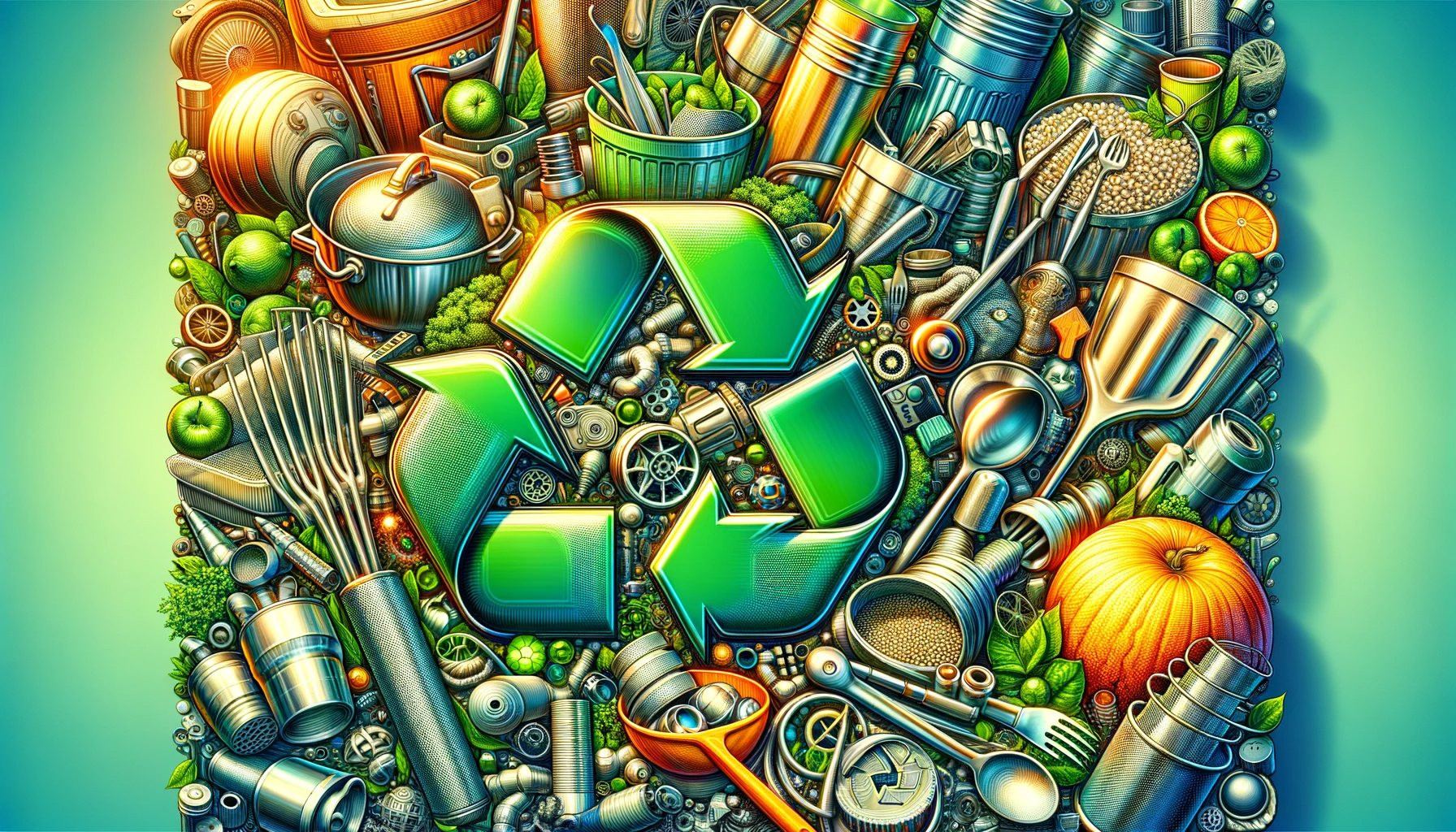Over 8 million tons of steel cookware and kitchen items get discarded every year globally.
Do you know how to properly recycle stainless steel pots and pans?
Recycling stainless steel cookware is tremendously beneficial for saving energy and natural resources while reducing environmental impacts.
However, recycling these items requires some careful preparation beforehand.
Let’s dive into a complete guide on how to sustainably recycle those old stainless steel pots and pans.
How to Recycle Stainless Steel Cookware?
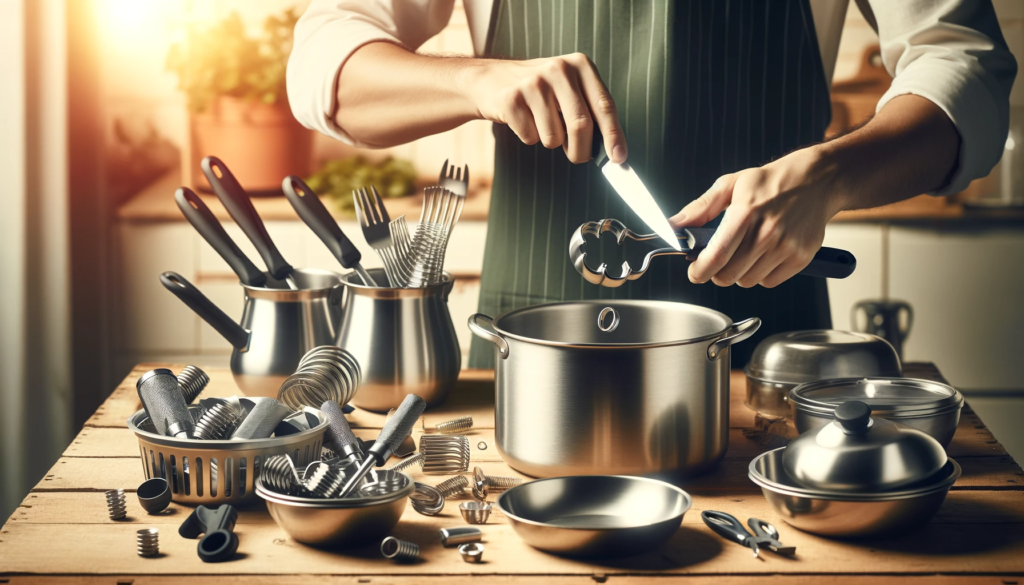
Recycling stainless steel cookware is straightforward.
First, remove any non-steel parts like handles and wash thoroughly.
Check if your municipal recycling program takes stainless steel, otherwise try scrap metal dealers.
At the facility, magnets first extract standard steel before shredding and melting the stainless steel, which gets made into new products.
As we’ll explore more below, preparing your cookware properly and finding the right recycling avenue are key steps when sustaining recycling stainless steel items.
Why Recycle Stainless Steel Cookware?
Stainless steel is a highly recyclable material that can be recycled an infinite number of times without any loss of properties or quality.
When stainless steel cookware is recycled, it reduces the need to manufacture new stainless steel products from raw materials like iron ore, chromium and nickel.
The production of new stainless steel is an extremely energy-intensive process that requires the use of finite natural resources and results in substantial greenhouse gas emissions that accelerate climate change.
For example, creating each ton of new stainless steel emits between 1.4 and 1.8 tons of carbon dioxide on average.
On the other hand, producing the same amount of steel by recycling old scrap stainless steel rather than using virgin materials reduces carbon dioxide emissions by nearly 60%.
In contrast, recycling old stainless steel cookware to produce new steel products consumes significantly less energy and natural resources while also minimizing environmental impacts.
The Steel Recycling Institute estimates that recovery of ferrous scrap for recycling conserves 75% of the energy that would be needed to create the metal from raw materials.
For these reasons, recycling old stainless steel cookware is tremendously beneficial for the environment while also upholding the principles of the circular economy where materials remain in use.
By recycling stainless steel rather than extracting more virgin ore, we reduce damage to natural habitats caused by mining activities.
We also diminish the accumulation of metal waste in landfills that can leach toxic substances.
Preparing Your Cookware for Recycling
Before tossing stainless steel cookware into the recycling bin, some preparation is required to ensure it does not contaminate other recyclable materials.
The first vital step is to remove any parts attached to the cookware that are not made of stainless steel, such as handles, knobs and lids.
These items are usually constructed from non-metallic materials like plastic, rubber, wood or baked enamel coating that contains no steel.
Leaving them on would introduce impurities into the steel recycling stream which can impact the quality and properties of the recycled metal.
Use screwdrivers to detach knobs and handles if possible, being cautious about sharp edges.
Give the cookware a thorough wash beforehand with detergent to eliminate food residues that could also contaminate recycled steel products.
Use abrasive scrubbers and brushes to remove stubborn grease, burned food bits and cooking stains inside the pots or pans.
This is an essential step that prevents issues during the remelting process at steel mills.
For safety, wear thick gloves when scrubbing sharp cookware.
Check with your local recycling program on any other specific requirements they may have regarding stainless steel products.
Some may not accept cookware due to its larger size and irregular shape compared to traditional steel recyclables.
Find out if dropping off clean stainless steel cookware at scrap metal recycling centers is an alternative option in your area.
Finding a Recycling Center
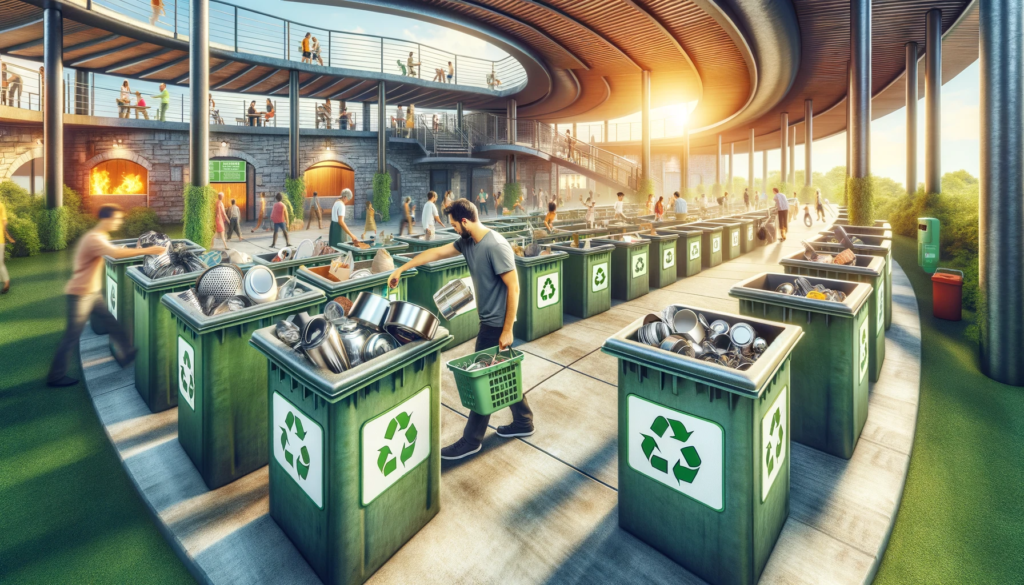
Start off by checking with your municipal or county recycling program to see if they accept stainless steel cookware.
An increasing number of local recycling departments are thoughtfully expanding their metal collection services to include stainless steel pots, pans and other items, along with commonly recycled metals like aluminum and copper.
Determine any special preparation that may be needed, like removing non-steel parts from cookware as described earlier.
Also find out if stainless steel products must be dropped off at a specific municipal recycling location that accepts scrap metal, or if they can be picked up curbside along with your regular recycling bin.
If your community recycling program does not accept cookware made from stainless steel, contact industry associations in your area that actively promote steel recycling.
For example, the Steel Recycling Institute, a division of the American Iron and Steel Institute, operates dozens of recycling drop-off sites across the United States that accept stainless steel products from households and small businesses.
As another option, scrap metal dealers and junkyards may accept stainless steel cookware and other discarded household items made from various steel alloys.
Call around to independent recycling centers, junkyards and scrap metal dealers in your region to find out their specific policies.
Let them know you wish to drop off clean post-consumer stainless steel cookware for recycling.
Inquire about any limitations they may have in terms of item size, weight or condition.
What Happens During Stainless Steel Recycling
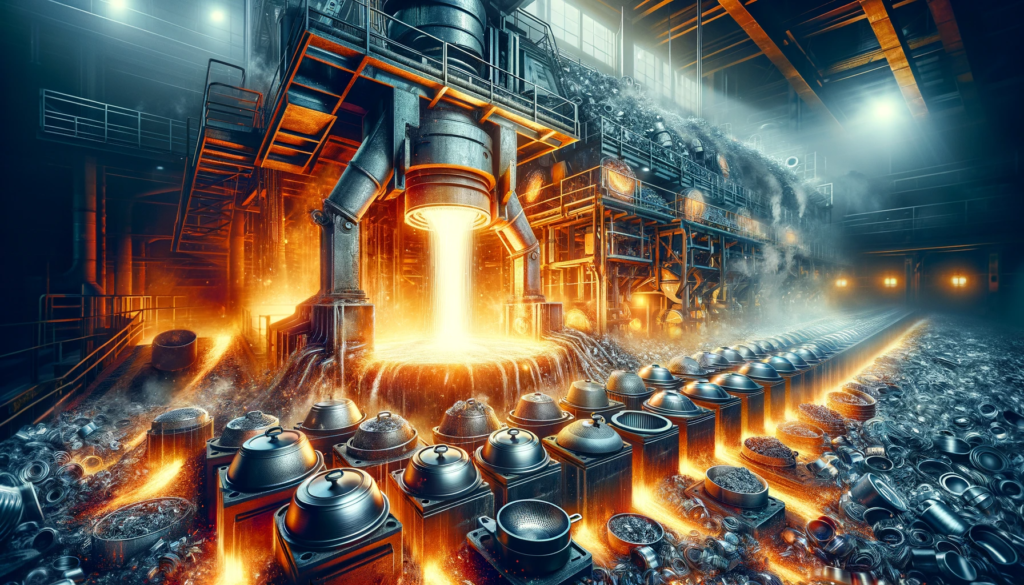
Once old stainless steel cookware arrives at a metal recycling facility, it goes through a series of processes before emerging as part of brand new steel products.
Recyclers first use powerful magnets to extract standard carbon steel and iron from the material mix entering the facility.
This is done because stainless steel cookware is not magnetic due to its specialized metallurgy containing chromium and nickel instead of just iron.
The cookware then goes through a mechanical shredding machine which physically breaks it down into small uniform fragments better suited for recycling.
Plant workers may manually sort through the shredded material to remove any remaining non-metallic parts.
The fragmented stainless steel pieces then get blended with other recycled steel scrap materials of varying types and alloys.
This recycled metal mix moves on to the melting facility where it gets loaded into a large furnace which heats the solid material to temperatures exceeding 1,600°C to produce molten steel.
Various chemical reactions occur during the melt process to alloy and strengthen the steel.
The liquid steel then flows into casts or molds which shape it into slabs, billets and ingots as the metal cools and solidifies.
These raw solid steel forms are then rolled or shaped into rods, wires, tubes, beams, sheets and other fundamental forms used in manufacturing.
These recycled steel components then become the raw materials suitable for fabricating structural steel products, parts for vehicles and appliances, industrial equipment, household items, furniture, and even new stainless steel cookware.
The ongoing reuse and recycling of steel embodies the essence of the circular economy model.
Buying Recycled Stainless Steel Products
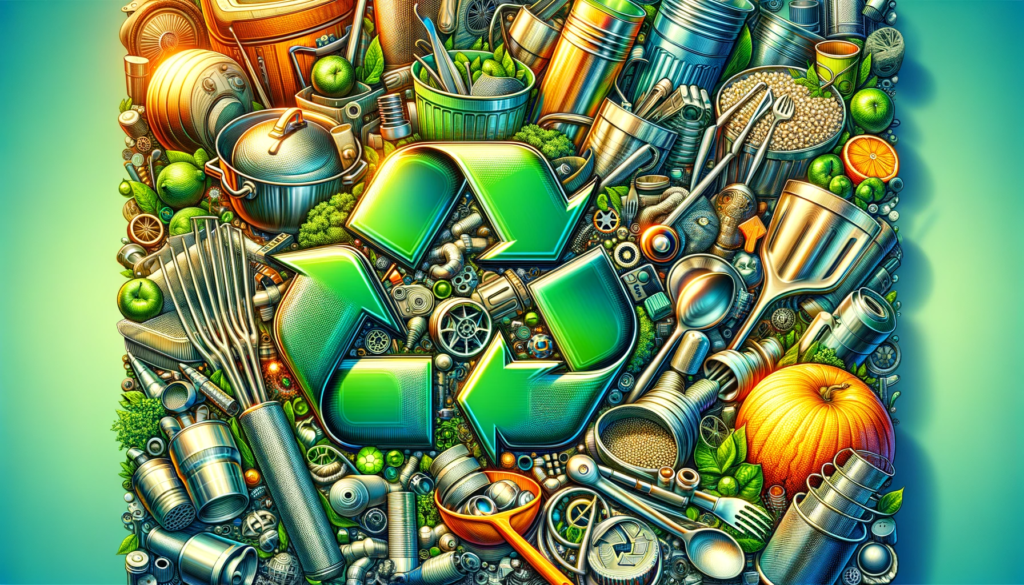
An eco-friendly way to complete the recycling loop is to purchase consumer products made using post-consumer recycled stainless steel.
This means pots, pans and other items used in household kitchens get recycled and remanufactured into useful goods like steel wiring, construction rebars, plumbing pipes, household appliances, furniture and automotive parts.
Some may even emerge reincarnated into brand new cookware again!
When out shopping for products containing stainless steel, check item labels, packaging and company websites for factual information on recycled content.
Terms like “recycled steel” or “contains XX% post-consumer recycled content” indicate the percentage of reused steel material as opposed to newly produced steel.
Conscientious manufacturers eager to reduce environmental impacts now proudly highlight the recycled stainless steel or other metals used in their products.
Support these sustainable companies by purchasing their eco-friendly items made from recycled metals whenever possible.
These greener products work just as reliably as items made completely from new stainless steel.
By driving ongoing consumer demand for goods containing recycled metals, we can steadily improve steel recycling rates year-over-year.
This allows more stainless steel and other metals to be continually reused rather than wasted – conserving an immense amount of energy and natural resources in the process.
With our purchasing power, everyday consumers can transform markets toward sustainability while also keeping millions of tons of metal scrap out of landfills with each passing decade.
Conclusion
Recycling stainless steel cookware keeps valuable materials in use and reduces the need for new steel production.
With some simple preparation and finding the right recycling facilities, we can give pots and pans a new lease on life.
Support this circular system by purchasing items made from recycled steel.
